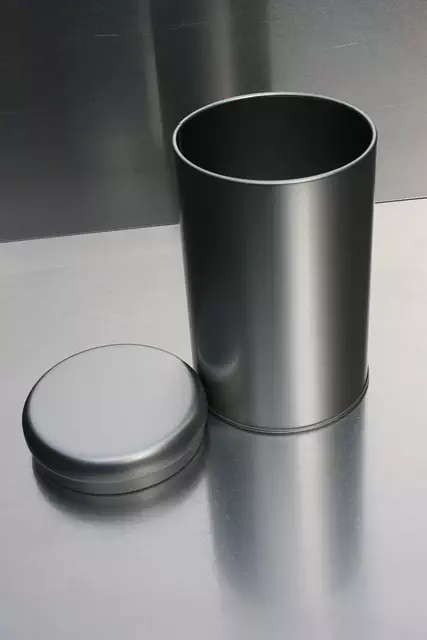Businesses are transitioning to eco-friendly custom packaging solutions due to growing environmental concerns and consumer demand for sustainable alternatives. This shift drives creativity in the industry, as brands utilize biodegradable materials, recyclable formats, and minimalist designs to reduce waste and enhance the unboxing experience without compromising brand image. Such changes not only benefit the environment but also differentiate companies in a crowded market, appealing to environmentally conscious consumers and streamlining distribution through reduced waste. Innovative custom packaging designs serve as powerful marketing tools while catering to specific product needs, leading to improved customer satisfaction, cost savings, and enhanced brand visibility. The future of custom packaging is focused on sustainability, with emerging trends like mushroom-based plastics and optimized shipping designs, all aimed at creating a greener future.
In an era where environmental consciousness is paramount, sustainable custom packaging emerges as a game-changer in the industry. This article explores the transformative power of eco-friendly custom packaging and its multifaceted benefits. From understanding the pressing need for change to uncovering innovative designs and materials revolutionizing the sector, we delve into how customized solutions cater to specific product needs while appealing to environmentally-aware consumers. Additionally, we gaze into the future, predicting trends that will shape sustainable packaging’s evolution.
- Understanding Sustainable Custom Packaging: The Need for Change
- Eco-Friendly Materials: Revolutionizing the Industry
- Innovative Designs for Efficient Packaging Solutions
- Benefits of Customization: Tailoring to Specific Product Needs
- Consumer Awareness and the Rise of Green Packaging
- Future Trends: Predicting the Evolution of Sustainable Packaging
Understanding Sustainable Custom Packaging: The Need for Change
In today’s world, where environmental concerns are at an all-time high, businesses are increasingly recognizing the need for sustainable practices, and custom packaging solutions are no exception. The traditional approach to packaging has often contributed to significant waste and environmental degradation due to the excessive use of non-biodegradable materials. This has prompted a shift towards eco-friendly custom packaging, which offers a greener alternative without compromising on product protection or brand aesthetics.
The demand for innovative custom packaging designs that are both functional and sustainable is growing. Consumers are becoming more conscious of their environmental impact, and brands are responding by adopting creative solutions. From biodegradable materials to recyclable formats and minimal designs, these innovations not only reduce waste but also enhance the overall unboxing experience. Embracing sustainable custom packaging is a step towards a greener future, ensuring that businesses can meet consumer expectations while minimizing their ecological footprint.
Eco-Friendly Materials: Revolutionizing the Industry
In today’s world, where environmental consciousness is on the rise, eco-friendly materials are revolutionizing the custom packaging industry. Consumers are increasingly demanding sustainable options that minimize waste and reduce their carbon footprint. This shift has prompted businesses to explore innovative custom packaging designs utilizing natural, recyclable, or biodegradable substances. From plant-based plastics derived from agricultural byproducts to recycled paper and cardboard, these alternatives offer a greener path without compromising quality or functionality.
By adopting eco-friendly materials, businesses can contribute to a more sustainable future while appealing to environmentally conscious consumers. Eco-friendly custom packaging not only reduces the environmental impact of product transportation but also provides an opportunity for brands to differentiate themselves in a crowded market. This trend is driving creativity, with manufacturers developing sleek and functional designs that enhance the overall unboxing experience while ensuring products remain secure and protected during transit.
Innovative Designs for Efficient Packaging Solutions
In the realm of sustainable business practices, innovative custom packaging solutions are transforming the way companies approach their eco-friendly obligations. Gone are the days when packaging was seen as a necessary but detrimental component of product distribution. Today, creative and thoughtful custom packaging designs offer both practical benefits for products’ protection and aesthetic appeal while promoting a reduced environmental footprint.
Eco-conscious consumers increasingly demand environmentally friendly custom packaging, pushing manufacturers to explore innovative options like biodegradable materials, minimal design aesthetics, and reusable containers. These approaches not only cater to the needs of environmentally aware shoppers but also provide efficient solutions for product presentation and transportation, ultimately contributing to a greener supply chain.
Benefits of Customization: Tailoring to Specific Product Needs
Custom packaging solutions offer a multitude of benefits, especially when it comes to catering to specific product requirements. By tailoring the design and material to the unique needs of each item, businesses can enhance the overall customer experience. For instance, fragile items require cushioning and specialized shapes to ensure safe arrival at their destination. Eco-friendly custom packaging is another advantage, allowing brands to incorporate sustainable materials like recycled paper or biodegradable plastic, reducing environmental impact.
Innovative custom packaging designs also serve as a powerful marketing tool. Customized boxes, bags, or containers can reflect a brand’s identity and values, leaving a lasting impression on consumers. Furthermore, unique shapes and patterns can make products stand out on shelves, attracting buyers’ attention and increasing sales potential. This strategic approach to packaging design not only satisfies practical needs but also contributes to a brand’s visual storytelling.
Consumer Awareness and the Rise of Green Packaging
As consumer awareness about environmental issues continues to grow, so does the demand for eco-friendly custom packaging solutions. The rise of green packaging is a direct response to the growing concern over the environmental impact of traditional packaging methods. Today’s consumers are increasingly conscious of the sustainability and ethical implications of their purchases, leading them to support businesses that prioritize eco-friendly practices.
This shift has sparked innovation in the realm of custom packaging designs, with companies developing creative and sustainable alternatives. Eco-friendly custom packaging not only caters to this consumer demand but also offers numerous benefits for businesses. It enhances brand image by showcasing a commitment to environmental responsibility, reduces waste, and can even lower production costs in the long run due to its reusability and recyclability.
Future Trends: Predicting the Evolution of Sustainable Packaging
The future of sustainable packaging is brimming with potential, as brands increasingly prioritize eco-friendly customs solutions. One prominent trend involves the adoption of biodegradable and compostable materials, ranging from mushroom-based plastics to paper-based alternatives, transforming the landscape of traditional custom packaging. We’re also seeing a rise in innovative designs that minimize material usage, optimize shipping efficiency, and extend product shelf life—all while maintaining aesthetic appeal.
Customization itself is evolving, with advanced digital printing technologies allowing for unique, personalized packaging that reduces waste associated with overprinting and excess inventory. As consumer demand for sustainable products continues to grow, so does the need for creative, forward-thinking custom packaging solutions that meet both brand identity goals and environmental responsibilities.


